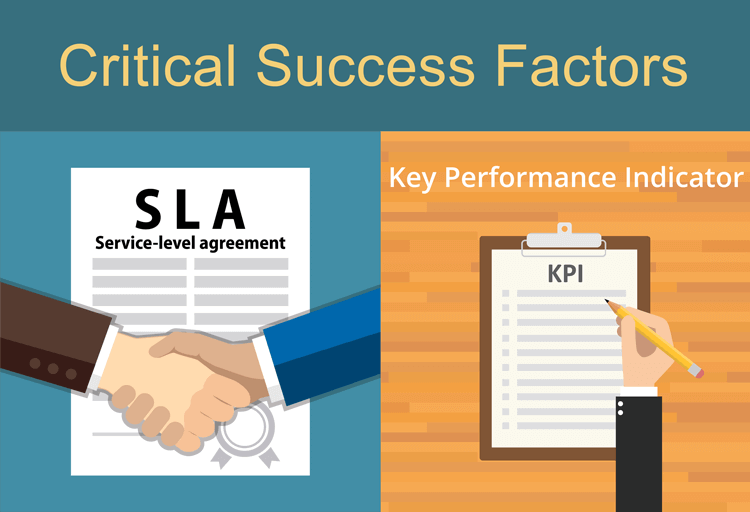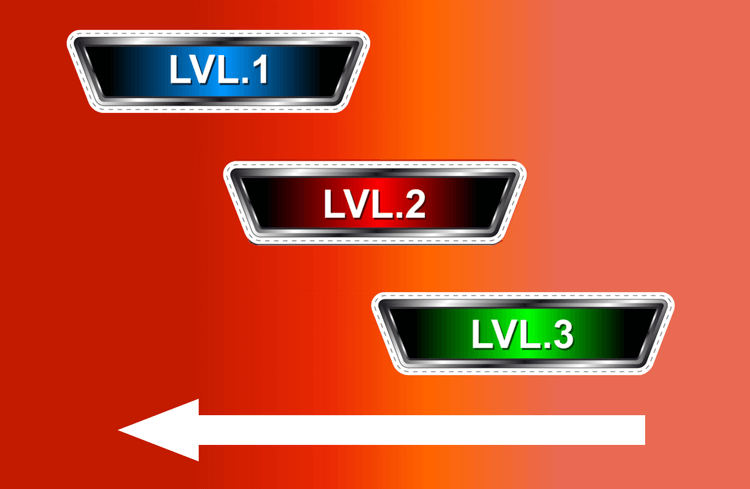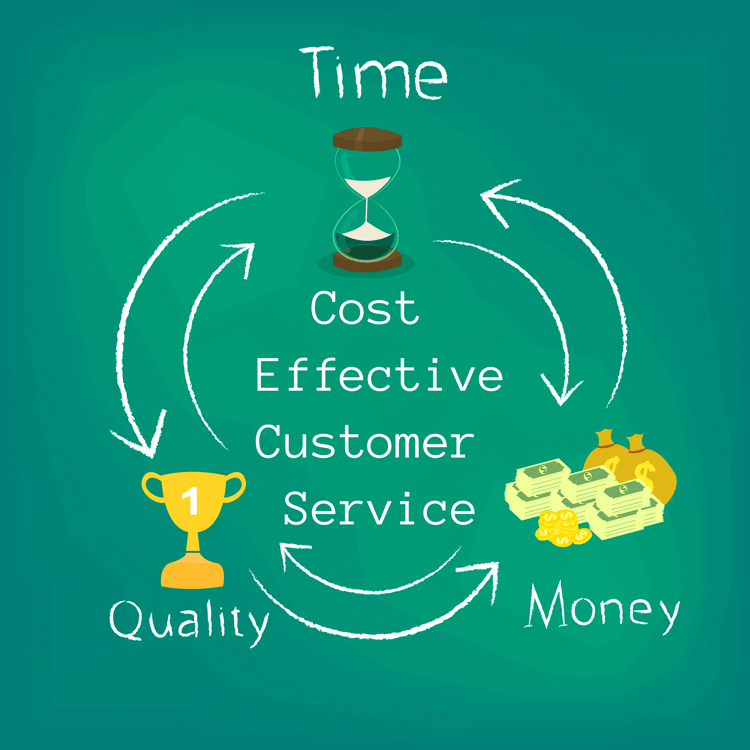How to Define & Measure ITSM Critical Success Factors (CSF) with SLAs & KPIs
When the young man arrived at the ITIL Service Manager's office, he found her reading a book. He politely knocked, and the manager invited him to sit down, saying, "What can I do for you?"
The young man said, "My manager asked me to write an SLA for my Service Desk, and I don't know where to start. Another manager told me you know everything there is to know about IT best practices."

"Well, first off, I do not believe I know everything. However, I have been at it for many years and keep learning by studying best practices like the Theory of Constraints by Goldratt to eliminate blockages in value streams. That is how I got the nickname ITIL Guru. Axelos1 Global Best Practice owns and manages ITIL IT best practices."
"I just joined the company as Service Desk manager."
"The Service Desk a unique challenge because you provide so many services to all business departments and users. Your primary service is to be the single point of contact (SPOC) for all of IT.
"Before we get into how to write an SLA, answer this question for me. What do your customers want?"
"I don't know. I have never personally asked my customers."
"Don't you think that is an excellent place to start?"
"I suppose. I could ring customers up and ask them."
"Who will you talk to, and what are you going to ask them?"
"I could call some of my business friends and ask them."
"It sounds to me that you could use a little guidance. Don't let yourself get down. I find it common among IT people to forget who the customer is and know what they want. We will come back to the big question, what do your customers want. Before we do, are you clear on the basic definitions around the science of SLAs?
What are Service Level Agreements (SLAs), and what do they mean to me?
"A Service Level Agreement, or SLA, according to ITIL best practices, is a 'documented agreement between a service provider and a customer that identifies both the services required and the expected level of service.2'
"An SLA documents what services you provide to the customer and what the customer will do in return like they only call the Service Desk to request services.
"A service provider is the IT organization, and your team, as I mentioned, is the single point of contact for all of IT. That means that you essentially partner with all the other IT functional groups to deliver and support services to customers. Customers often think of the Service Desk when they think of IT. To ensure there are no support misunderstandings, you will want to create Operational Level Agreements (OLA) with all the other IT groups supporting the SLAs.
For a company to be successful, the IT department must always deliver value
"A service includes many IT products, resources, information, and technology combined to create, deliver, and support something that brings value to the business consumer. Value is significant to remember. The role of IT is to deliver value. Value enables the business to accomplish their work in such a way that the business succeeds.
"A service offering is a formal description of one or more services, designed to address the needs of a target consumer group. Offerings may include goods (tangible things like laptops), access to resources, and service actions.3
SLAs define service offerings, who can get the offering, how they can request it, and how you will support them after they have the service
"Is this starting to make sense to you?"
"Yes, it does. Before the definitions, you asked me who in the business I would talk to and what I would ask. I now know that I should talk to as many department heads as I can and ask them what they require to be successful."
"Yes, that is perfect!"
"Now that we have the basic definition of the SLA and some of the terms around them, it is time to dig a little deeper. And this is the area that most people fail. They write an SLA and then forget it. The power of an SLA is that it is the vital doorway to continuous improvement."
What are Critical Success Factors (CSF)? They are why we write SLAs
The ITIL Guru continues: "We need some way to measure our performance, and the way we do that is by defining Critical Success Factors. CSFs are what the business requires to be successful, that is, to meet its goals. As a support organization, knowing CSFs is where we begin in our quest for customer satisfaction. Construct SLAs around delivering service levels to meet CSFs. Understanding CSFs from the customer's perspective is the real reason I said that you must talk to your customers to know what they need. Besides talking, you could survey or hold focus groups.
"In my experience, there are five critical success factors examples for Service Desks. I will give you those, but you must promise to do your interviews and surveys of department heads and determine if they are true for you.
- We make it easy for users to contact IT to request help, ask questions, or provide feedback.
- We communicate well with our users, keeping them informed and meeting their expectations.
- We resolve user incidents quickly and efficiently.
- We fulfill user service requests promptly and efficiently.
- We achieve high levels of customer satisfaction.4
If CSFs are the why, then Key Performance Indicators (KPIs) are the SLA metrics that tell you how you are doing
"If you know what is critical for customer success, then, and only then, can you collect metrics that tell you if you are delivering what the business needs. Because there are so many Service Level Agreement metrics that are easy to collect, for the successful Service Desk, focus on just a few that support CSFs. These few SLA metrics we designate as Key Performance Indicators, or KPI.
"There is a standard rule of thumb which takes its origins from the 80/20 rule (Pareto principle). It goes like this: No more than 3 CSF and no more than 3 KPIs per CSF.
"With hundreds of metrics to choose from, what are the KPIs that measure SLA performance for a Service Desk?
- Cost: Cost per contact/ticket
- Quality: Customer satisfaction (CSAT) and FCR (first contact resolution)
- Productivity: Analyst utilization
- Analyst: Job satisfaction
- Service Level: ASA – the Average Speed of Answer.5
"And one final recommendation, that is after you get customer inputs, write the SLA, gather metrics into KPIs, report on that SLA tracking, and begin to manage by the numbers. A smart approach is using the balanced scorecard approach by Kaplan and Norton, which is managing strategy and vision, not control, at the center of running a value organization.
"And one more challenge. When setting your SLA performance targets, remember to include all the other IT functional teams. They must agree. They must work together as a team, or peak performance is impossible. SLAs are about setting IT performance metrics for the business. Operational Level Agreements (OLA) are internal IT agreements between all the different functional teams on how these teams work together to meet the SLA targets.
"Come back and see me when you are ready. There is much more about using CSF, KPI, and SLA for continuous improvement to drive business success and how to create OLAs to support them."
Footnotes:
1. AXELOS Global Best Practices, ITIL 4 Foundation, TSO (The Stationary Office), 2019
2. Ibid., 152.
3. Ibid., 13.
4. MetricNet, LLC, "Metrics That Matter – Service Level"
5. Ibid., 15.





